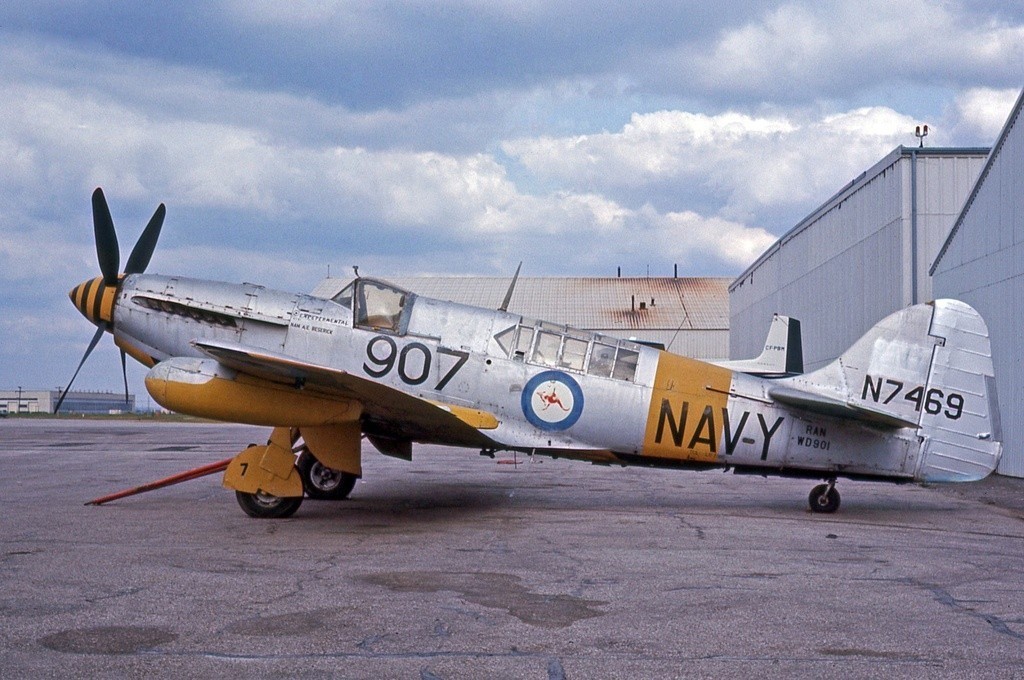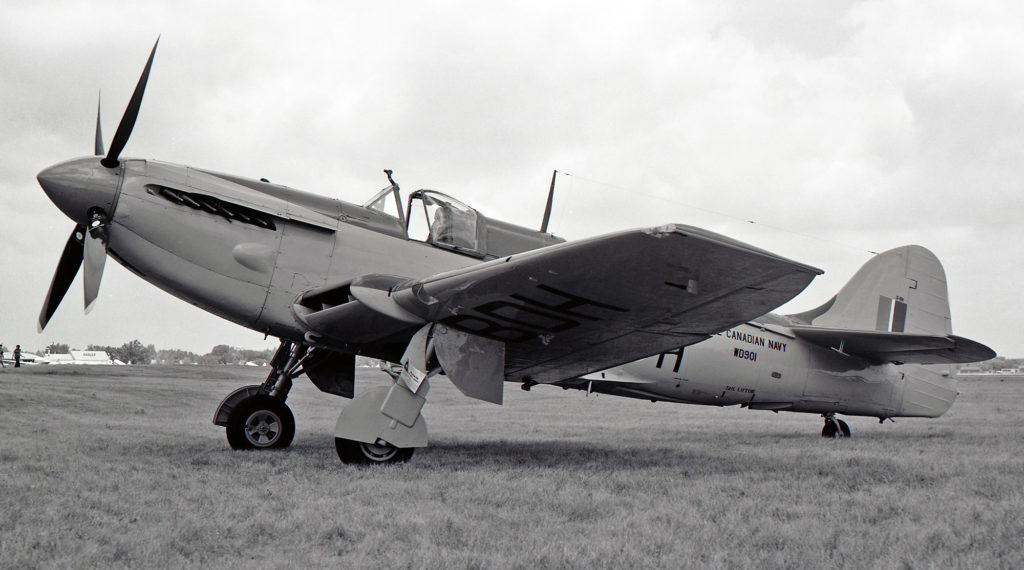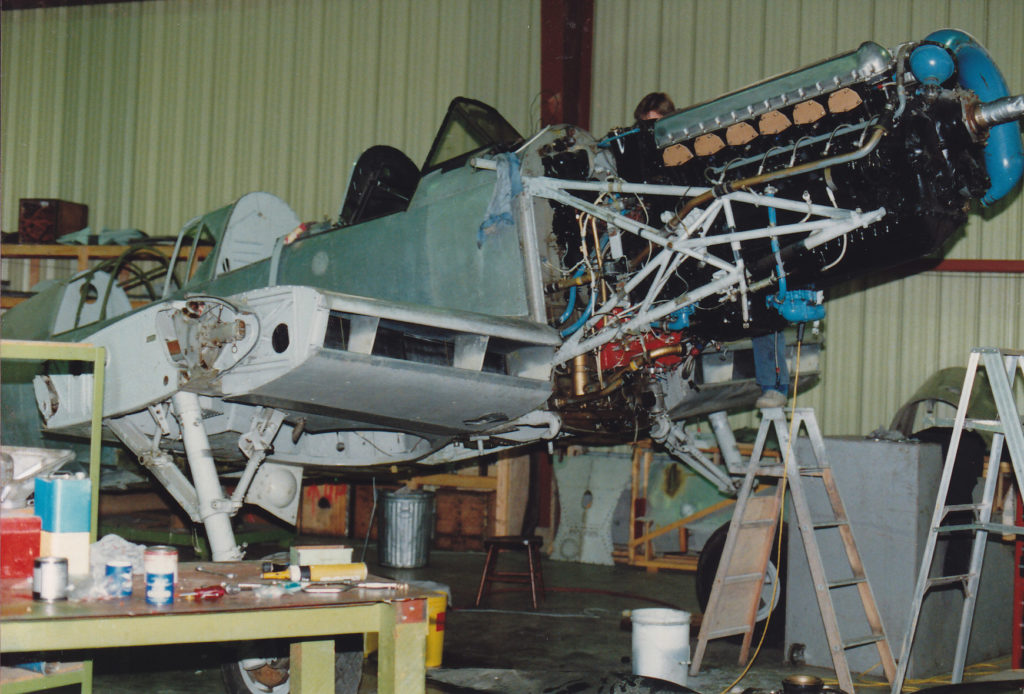Estimated reading time 7 minutes, 43 seconds.
On May 10, the throaty growl of a Fairey Firefly Mk. 6 rang across the ramp at the Canadian Warplane Heritage Museum (CWHM) in Hamilton, Ontario. It had been eight years since museum staff and volunteers had heard that particular music, and there’s no doubt the Firefly put a glow in their hearts that day.

“The Firefly is symbolic as far as our story goes,” said Al Mickeloff, CWHM marketing manager. “We consider the Fairey Firefly to be our flagship aircraft. The queen is definitely the (Avro) Lancaster, but the Firefly was the first type to join the museum collection. It’s the one that kicked it all off; that’s why it’s in our logo.”
Indeed, the Firefly’s connection to the Canadian Warplane Heritage Museum goes back to the early 1970s, when two Toronto-based floatplane pilots — Alan Ness and Dennis Bradley — decided they wanted to pool their money to buy something a bit faster. Mickeloff said the P-51 Mustang was originally in their sights, but it was beyond their means. Then, the duo came across a Firefly for sale in Georgia in 1971. They asked around about the type at the EAA’s Oshkosh airshow that summer.
“They called this gentleman and flew down to see it,” recounted Mickeloff, who co-authored the new 304-page book, Fifty Years: Canadian Warplane Heritage, in celebration of the organization’s half-century anniversary this year.

“At first, they weren’t that impressed. It was sitting in a field, covered in dirt. But then the guy got in and started it right up! They gave him $5,000 down and $5,000 upon delivery to Toronto. It was ferried up and arrived in October 1971. Ness and Bradley teamed up with Peter Matthews and John Weir to restore the aircraft that winter.”
The group decided to form Canadian Warplane Heritage (the “museum” moniker came later) just before the Firefly’s first post-restoration flight on June 4, 1972. The low-wing cantilever monoplane had been restored to represent the livery of the Royal Canadian Navy, which used the type after the Second World War on its aircraft carrier, HMCS Magnificent.
Designed and built by Britain’s Fairey Aviation Company Limited from 1941 to 1956, the Firefly’s folding wings enabled it to serve on aircraft carriers as a fighter reconnaissance, escort, and anti-submarine aircraft. The type was retired from the Royal Canadian Navy in 1951 and all serviceable aircraft were sold overseas.
Like the museum’s Lancaster, Mickeloff said the CWHM Firefly is one of just two flying examples in the world today, and he credited the museum founders for their vision.

“Back then, there were no other organizations in Canada restoring vintage aircraft to flying condition,” he told Skies.
In 1972, Bradley took the Firefly down to Oshkosh. Just one year after he and Ness had been there researching the type, their Firefly won the show’s award for outstanding warbird.
“They decided that flying a warbird out of Toronto International was not the best, so in October of 1972 they moved it to Hamilton,” continued Mickeloff. “Hamilton was an ex-RCAF base. All of these ex-military guys came in and got involved; it generated huge interest and veterans wanted to help them. They added a Chipmunk and then a Harvard, and the rest is history.”

Sadly, Ness was killed and the Firefly destroyed by a crash at the 1977 CNE Airshow. It was a huge setback for the group, which contemplated not flying again.
“But they realized Alan would have wanted them to continue. In 1979, they acquired a second Firefly from a museum in Australia. After restoration, it flew from 1992 to the end of the 2013 season.”
Then, a crack was discovered in one part of the aircraft’s folding wing mechanism. CWHM staff searched the world for a replacement, but none could be found. So the museum committed the resources to have one custom-made.
Presently, the Firefly restoration is making great strides under the direction of CWHM’s chief engineer, Jim VanDyk, with more testing underway since the first run-up on May 10. Mickeloff said the team hopes to have work completed for the museum’s Skyfest50 anniversary event, June 25 to 26 at Hamilton airport.

“It’s not an airshow,” he said. “But we will have lots of operational aircraft here, including the Mosquito, Spitfire, and Hurricane. It’s a great chance to see all the aircraft up close on the ramp.”
Tickets to Skyfest50 were still available at the time of writing.









It looks like one of the very few Griffin powered aircraft. I have heard that the counter rotation makes them harder to fly.
Counter or clockwise for tail draggers simply means which way they will swing on take off. The Firefly normally takes off with a bootful of left rudder until the tail comes up and the gyroscopic precession from the prop ceases. This swing was even more pronounced in a Sea Fury with it’s more powerful Centaurus engine & 5 bladed prop. It also tended to swing when landing as the tail came down. Firefly pilots usuall did 3 point landings as a matter of pride. Sea Furies were usually wheeled on with a little power to provide rudder control until the tail wheel came down when the throttle was closed. I was a Firefly pilot in the RN and during a 2 1/2 year loan posting in the mid 50’s to the RAN flew both types.